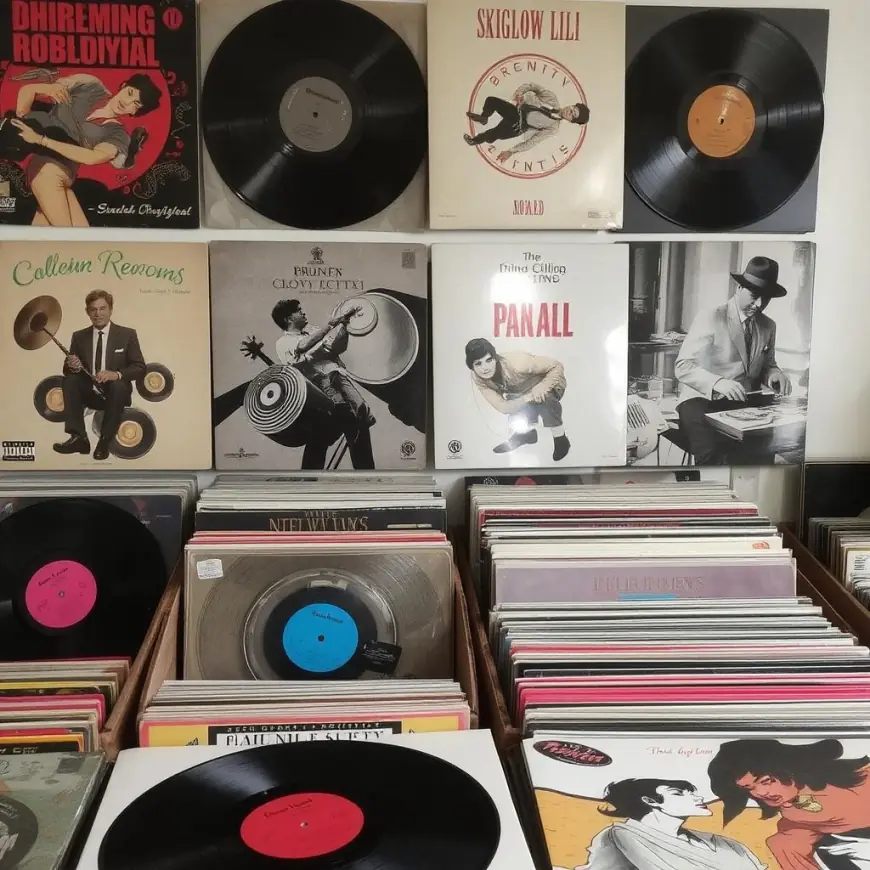Comparing Indian Pressings vs Foreign Pressings for Rarity

For collectors of Bollywood vinyl records, one of the most fascinating aspects of building a collection is deciding between Indian pressings and foreign pressings. Both categories have their own charm, rarity, and appeal, but they differ greatly in terms of production quality, distribution, survival rates, and collector value. Understanding these differences not only helps enthusiasts identify hidden treasures but also deepens appreciation for the global reach of Bollywood music.
Indian pressings were the original source for Bollywood soundtracks. Companies like His Master’s Voice (HMV), Odeon, and Polydor dominated the local market, pressing vinyl in large numbers for domestic consumption. These records carried the essence of Indian cinema at the time of release, often with artwork that matched local marketing campaigns. They were affordable, widely circulated, and accessible to audiences across Indian cities. However, their longevity was often compromised by the climate and handling. The heat, humidity, and lack of proper storage meant that surviving copies today are often scratched, warped, or worn. For collectors, finding a mint-condition Indian pressing of a popular soundtrack is a challenge, making pristine copies especially valuable.
Foreign pressings tell a different story. Bollywood’s popularity among the Indian diaspora in the United Kingdom, United States, Canada, and the Middle East created a demand for film soundtracks abroad. Labels like Odeon UK and EMI released limited runs of Bollywood LPs tailored for overseas markets. These pressings were often made in smaller numbers compared to Indian editions, which immediately adds to their rarity. Moreover, they were produced with higher-quality vinyl and packaging, as Western pressing plants were known for better sound quality and durability. Because many foreign buyers valued records as keepsakes rather than disposable entertainment, these pressings often survived in better condition.
Artwork differences between Indian and foreign pressings also contribute to their uniqueness. Indian covers reflected local design aesthetics, sometimes using hand-painted posters, vibrant colors, or regional typography. In contrast, foreign pressings often modified artwork to suit international markets. Some used simplified layouts, English-only text, or alternative imagery. For collectors, these variations make certain editions particularly desirable, as they showcase how Bollywood was visually adapted for different audiences. Owning both versions of the same album can reveal striking cultural contrasts.
When it comes to rarity, context plays a major role. Indian pressings of blockbuster films like Sholay, Mughal-e-Azam, or Amar Akbar Anthony were produced in large numbers, but most surviving copies show heavy use. Foreign pressings of the same titles were fewer in number, yet often better preserved. On the other hand, obscure or less successful films pressed in India sometimes had very small production runs and were never exported. In such cases, the Indian pressing becomes the rare and more valuable edition.
Price trends in collector markets also reflect these dynamics. A well-preserved Indian pressing of a major classic can command high prices simply because so few copies remain intact. Meanwhile, foreign pressings of the same soundtrack may fetch even higher sums, especially if they feature unique artwork or superior sound quality. For instance, a UK pressing of a 1970s R.D. Burman soundtrack may sell for significantly more than its Indian counterpart, despite both carrying the same music. Collectors often look at condition, rarity of print run, and historical significance to determine which version is more valuable.
Foreign pressings also highlight Bollywood’s cultural influence beyond India’s borders. These records were bought not only by expatriate Indians but also by curious Western audiences exploring international sounds during the 1960s and 1970s. As a result, some rare Bollywood LPs ended up in European or American record stores alongside jazz, rock, or world music. Finding a Bollywood pressing in a London flea market or a New York vintage shop carries a sense of discovery that adds to their mystique.
Another factor is the preservation of lost music. In some cases, certain soundtracks are better preserved in foreign pressings than in India. Domestic copies may have deteriorated or disappeared altogether, while overseas versions, stored in more favorable climates, remain playable. Collectors who hunt for forgotten Bollywood music sometimes turn to international markets precisely for this reason. These foreign pressings, therefore, act as cultural archives that safeguard music history that would otherwise be lost.
Ultimately, comparing Indian and foreign pressings is not about declaring one superior to the other. Rather, it reveals the layered story of how Bollywood music circulated, survived, and gained recognition across the globe. Indian pressings carry authenticity, connecting collectors directly to the domestic release history. Foreign pressings, on the other hand, represent rarity, preservation, and global adaptation. For serious collectors, the ideal collection includes both, creating a more complete picture of Bollywood’s vinyl legacy.
In conclusion, rarity in Bollywood vinyl cannot be understood in isolation. Indian pressings reflect the heartbeat of cinema culture at home, often produced in larger numbers but difficult to find today in excellent condition. Foreign pressings offer limited runs, higher quality, and alternative artwork, making them prized possessions for collectors. Together, they represent two sides of the same coin: one grounded in the streets and theaters of India, and the other echoing in record shops and homes across the world. For enthusiasts, both are invaluable reminders of Bollywood’s enduring musical journey.
What's Your Reaction?
 Like
0
Like
0
 Dislike
0
Dislike
0
 Love
0
Love
0
 Funny
0
Funny
0
 Angry
0
Angry
0
 Sad
0
Sad
0
 Wow
0
Wow
0

















































